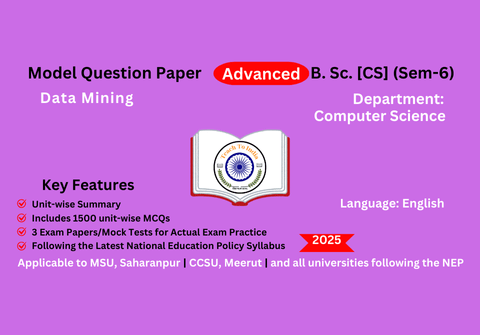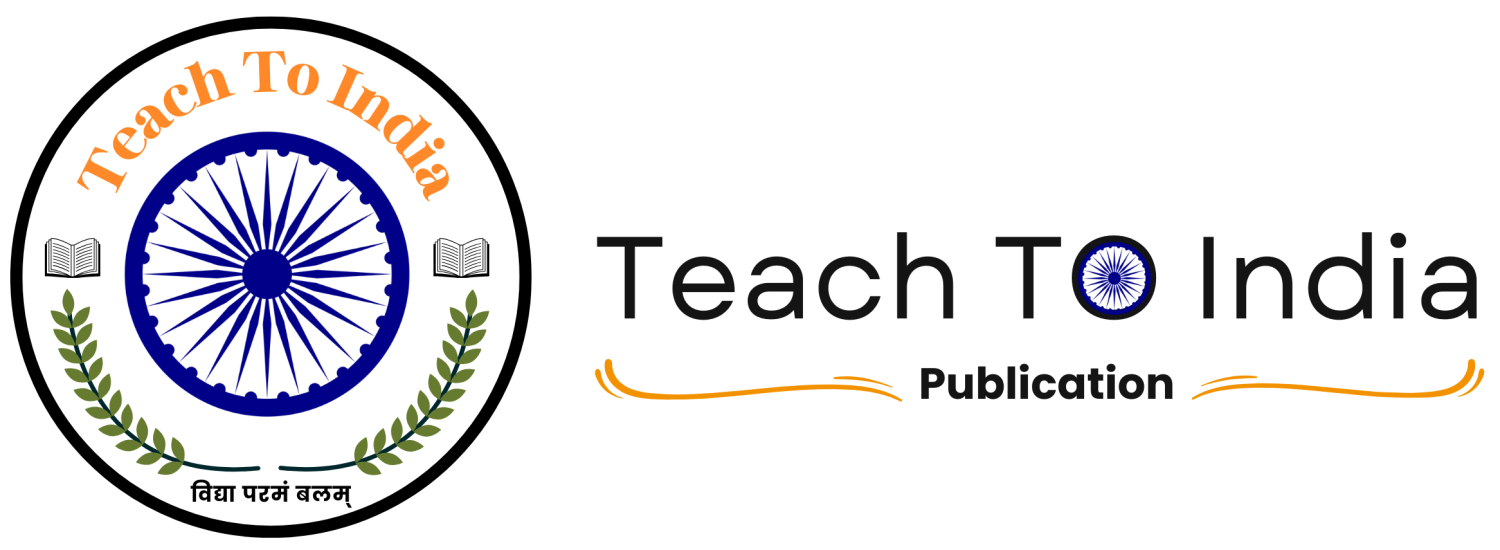Data Mining – Adv
- Description
- Curriculum
- Reviews

Model Question Paper
Data Mining
Key Features
- Unit-wise Short Notes
Each unit includes a summary in both languages, making revision faster and more effective. -
Extensive MCQ Practice
1500+ MCQ Practice Questions: This comprehensive question bank includes 1500+ multiple-choice questions (MCQs). Each unit contains approximately 150 MCQs covering a wide range of cognitive levels such as remembering, understanding, application, and analysis. -
Exam Practice Paper with Mock Tests
Includes three full-length mock tests for real exam practice. -
Latest Syllabus as per NEP
The syllabus aligns with the latest National Education Policy (NEP) and follows the exam patterns of MSU, CCSU, and other universities following the NEP. -
Designed by Experts
This question bank has been meticulously prepared by subject matter experts to ensure accuracy and relevance.
Why Choose This Model Paper?
- Complete Exam Preparation: Unit-wise summaries, MCQ practice, and mock tests provide a complete study solution.
-
Latest NEP-Based Pattern: Ensures compliance with the latest university exam structure.
|
Program/Class: Degree/ B.Sc. |
Year: Third |
Semester: Sixth |
||
|
Subject: Computer Science |
||||
|
Course Outcome: Identify what kinds of technologies are used for different application. Manipulate data preprocessing, data Warehouse and OLAP technology, data cube technology; mining frequent patterns and association, classification, clustering, and outlier detection. |
||||
|
Credits: 4 |
Core Compulsory/Elective |
|||
|
Max. Marks: 25+75 |
Min. Passing Marks: 33 |
|||
|
Unit |
Topics |
|||
|
I |
DATA WAREHOUSING: Data warehousing Components, building a Data warehouse, Mapping the Data Warehouse to a Multiprocessor Architecture, DBMS Schemas for Decision Support, Data Extraction, Cleanup, and Transformation Tools, Metadata.
|
|||
|
II |
BUSINESS ANALYSIS: Reporting and Query tools and Applications, Tool Categories, The Need for Applications, Cognos Impromptu, Online Analytical Processing (OLAP), Need, Multidimensional Data Model, OLAP Guidelines, Multidimensional versus Multi-relational OLAP, Categories of Tools, OLAP Tools and the Internet.
|
|||
|
III |
DATA MINING, CLUSTERING AND APPLICATIONS AND TRENDS IN DATA MINING: Introduction, Types of Data, Data Mining Functionalities, Interestingness of Patterns, Classification of Data Mining Systems, Data Mining Task Primitives, Integration of a Data Mining System with a Data Warehouse, Issues, Data Preprocessing, Cluster Analysis, Types of Data, Categorization of Major Clustering Methods, K-means, Partitioning Methods, Hierarchical Methods, Density-Based Methods, Grid Based Methods, Model-Based Clustering Methods, Clustering High Dimensional Data, Constraint, Based Cluster Analysis, Outlier Analysis, Data Mining Applications
|
|||
|
IV |
ASSOCIATION RULE MINING AND CLASSIFICATION: Mining Frequent Patterns, Associations and Correlations, Mining Methods, Mining Various Kinds of Association Rules, Correlation Analysis, Constraint Based Association Mining, Classification and Prediction, Basic Concepts, Decision Tree Induction, Bayesian Classification, Rule Based Classification, Classification by Backpropagation, Support Vector Machines, Associative Classification, Lazy Learners, Other Classification Methods, Prediction
|
|||
|
V |
Transportation Problem: Formulation, solution, unbalanced Transportation problem. Finding basic feasible solutions – Northwest corner rule, least cost method and Vogel’s approximation method. Optimality test: the stepping stone method and MODI method. Assignment model: Formulation. Hungarian method for optimal solution. Solving unbalanced problem. Traveling salesman problem and assignment problem.
|
|||







